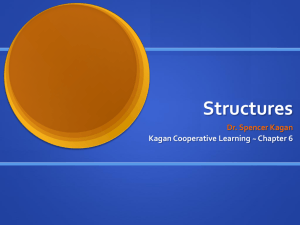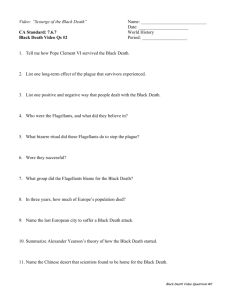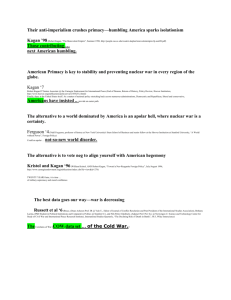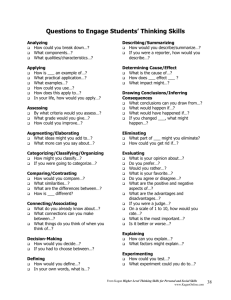AP European History
advertisement
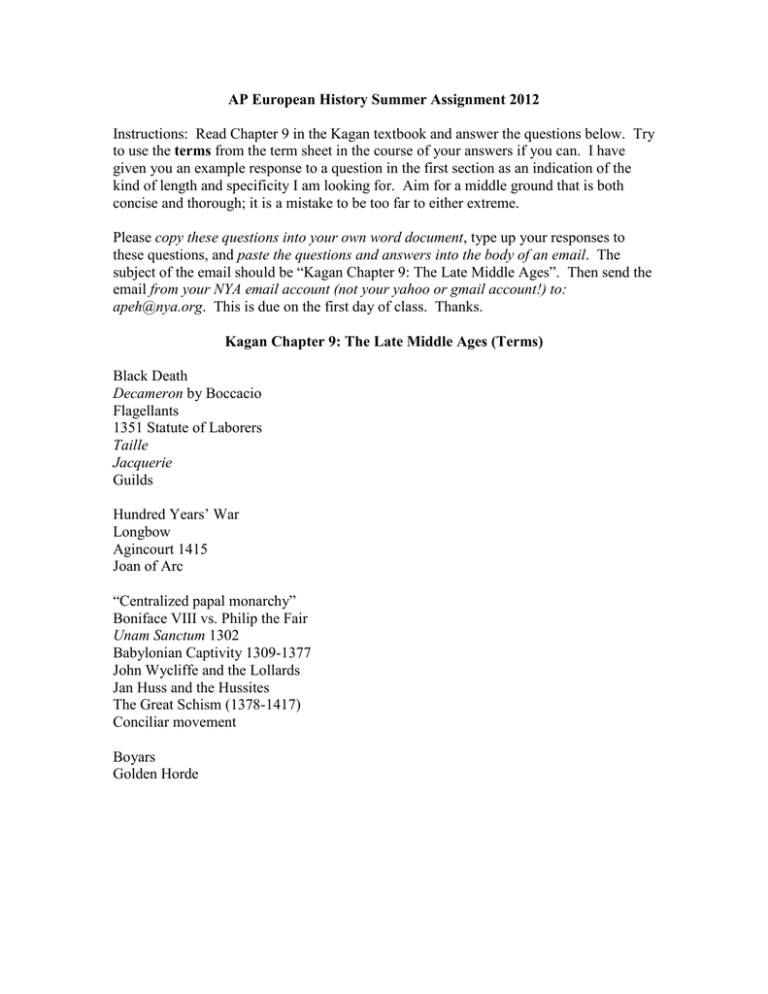
AP European History Summer Assignment 2012 Instructions: Read Chapter 9 in the Kagan textbook and answer the questions below. Try to use the terms from the term sheet in the course of your answers if you can. I have given you an example response to a question in the first section as an indication of the kind of length and specificity I am looking for. Aim for a middle ground that is both concise and thorough; it is a mistake to be too far to either extreme. Please copy these questions into your own word document, type up your responses to these questions, and paste the questions and answers into the body of an email. The subject of the email should be “Kagan Chapter 9: The Late Middle Ages”. Then send the email from your NYA email account (not your yahoo or gmail account!) to: apeh@nya.org. This is due on the first day of class. Thanks. Kagan Chapter 9: The Late Middle Ages (Terms) Black Death Decameron by Boccacio Flagellants 1351 Statute of Laborers Taille Jacquerie Guilds Hundred Years’ War Longbow Agincourt 1415 Joan of Arc “Centralized papal monarchy” Boniface VIII vs. Philip the Fair Unam Sanctum 1302 Babylonian Captivity 1309-1377 John Wycliffe and the Lollards Jan Huss and the Hussites The Great Schism (1378-1417) Conciliar movement Boyars Golden Horde Kagan 9.1 The Black Death 1. What conditions existed in Europe that made the plague more deadly when it arrived? Why did it spread to the areas it did? 2. How did Europeans respond to the appearance of the plague? Europeans responded in a variety of ways to the appearance of the Black Death. According to Boccaccio’s Decameron, some people thought that the plague could be avoided by upright living. Others thought that they should do whatever they felt like since they were going to die soon anyway. Some people fled the hard-hit cities. Others, known as flagellants, beat themselves as penance, hoping that would convince God to stop the plague. Finally, some people blamed the Jews for the sickness and organized attacks against them. 3. What economic changes did the plague bring in its aftermath? Who was better off? Who was worse off? 4. What caused the peasant rebellions of the late 14th century? 5. How did the results of the plague benefit monarchs? Kagan 9.2 The Hundred Years’ War and the Rise of National Sentiment 6. Who fought the Hundred Years’ War? Who won? Why? 7. What explains the success of Joan of Arc? 8. What were the major consequences of the war for France and for England? Kagan 9.3 Ecclesiastical Breakdown and Revival: The Late Medieval Church 9. What basic change in the church beginning in the 1200s led to trouble for the church in later centuries? 10. What was the fight between Boniface VIII and Philip IV about? Who won? What dramatic change resulted for the church? 11. What were the main characteristics of the Church during its “Babylonian Captivity” in Avignon? 12. What were the main teachings of Wycliffe and Hus? Why did the Church consider them a threat? What happened to them? 13. What consequences did the Great Schism have for the Church? Kagan 9.4 Medieval Russia 14. Under what conditions was Russia ruled in the 13th and 14th centuries? What changed by the end of the 15th century?

